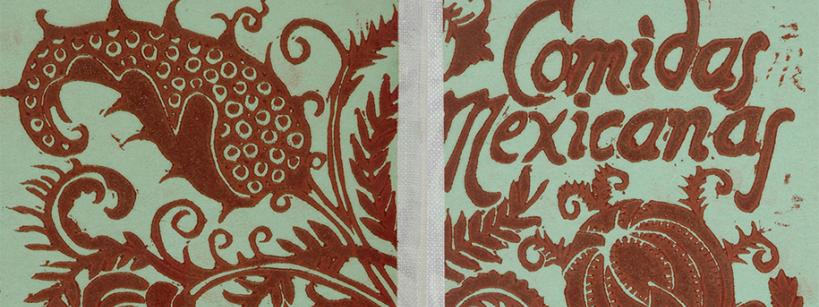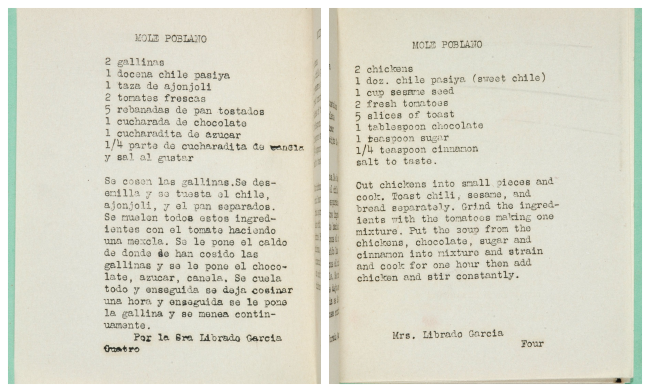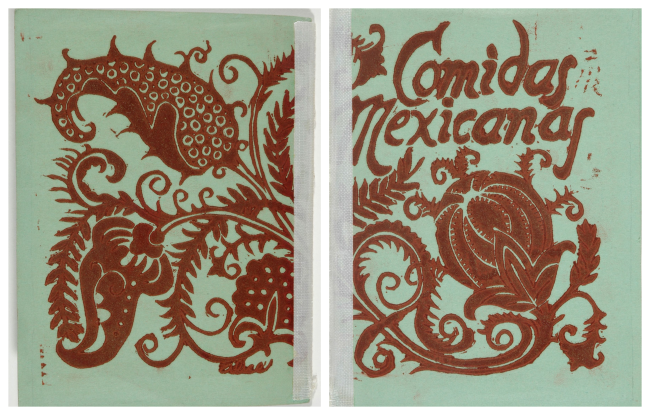By Christina Hummel-Colla, Library Collections Assistant
It is no surprise, given that I was born and raised in Los Angeles, that Mexican American food has always occupied a special place in my heart and stomach. When I left to study abroad in Saint Petersburg, Russia, I packed a bottle of hot sauce to ensure that I would have a flavor to remind me of home. All this to say, I was delighted when my colleagues and I began to explore Comidas Mexicanas, a 1937 cookbook in the Autry’s special collections that contains Mexican American recipes contributed by women living in Pasadena’s Mexican communities.
In a 1991 Los Angeles Times article, historian Marguerite Duncan-Abrams was quoted referring to these communities as “Pasadena’s forgotten neighborhoods,” understudied by earlier historians who omitted working-class Latinx and other minorities from their narratives. Nevertheless, 20th century Mexican American neighborhoods in Pasadena included Chihuahita, Sonora Town, and Winona. Pasadena’s Sonora Town, not to be confused with the Sonora Town that later became Chinatown, was home to 57% of Mexicans in the city, according to a 1922 study by USC sociology student Christine Lofstedt, quoted in the same article. Unlike wealthier Pasadena neighborhoods, Sonora Town and its sibling neighborhoods tended to be working class and affected in varying degrees by systemic issues such as poverty and ethnocentrism.
The Pasadena Settlement House, where Comidas Mexicanas was published, was established in 1911 (or 1914) in Sonora Town at 864 South Raymond Avenue and continued operating until the late 1940s. One of the most significant institutions of its time serving Mexican American populations, services provided at the Pasadena Settlement House included medical care, sewing classes for women, “Americanization” and other classes, and clubs of all types. Amidst this center of activity, Mexican American women embraced an opportunity to share and preserve their foodways and cultural heritage with both Spanish and English-speaking members of their communities.
Sporting a handmade stamped cover, Comidas Mexicanas contains eleven recipes, printed in both Spanish and English on facing pages, including:
- Puchas, contributed by Srta. Ida Jiner
- Biftec de Res, contributed by Sra. Magdalena Oceguera
- Carne de Salza de Tomate, contributed by Sra. Adela Lozana
- Mole Poblano, contributed by Sra. Librado Garcia
- Picadillo, contributed by Sra. Transita Tafoya
- Chiles Rellenos, contributed by Sra. Maria Esparza
- Lengua Gisada, contributed by Sra. Manuela P. Frescas
- Lengua en Salza de Almendra, contributed by Sra. Lala Hinckley
- Huevos Rancheros, contributed anonymously
- Frijoles, contributed anonymously
- Tortillas de Harina, contributed anonymously
Comidas Mexicanas and other historical cookbooks present excellent opportunities to “learn by doing” about historical cultural foodways. By re-creating the recipes found within, we may experience some small degree of what the creators intended to share, despite being separated by decades or even centuries. Additionally, we may find inspiration for our own personal favorite recipes, and even generate new traditions to share with friends, family, and members of our communities. To explore Comidas Mexicanas yourself, see the fully digitized cookbook on the Autry Museum’s website. If you are feeling especially adventurous, join Autry staff in our ongoing culinary adventures by recreating one of the recipes yourself. Alternately, keep an eye on this space for future blog posts—in an upcoming post, we will share one staff member’s experience with re-creating the Mole Poblano recipe contributed by Señora Librado Garcia!
Main Image:
[1] Comidas Mexicanas is a cookbook with hand-made stamped covers, published at the Pasadena Settlement House on May 22, 1937.
Additional Image:
[2] Señora Librado Garcia contributed this recipe for Mole Poblano, written in both Spanish and English, to Comidas Mexicanas.
#Exhibitions, #Archiving Women, #Local History, #Mexican American, #Foodways, #Library and Archives, #Special Collections, #Recipes


